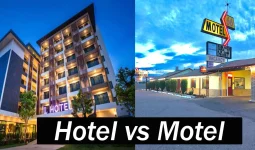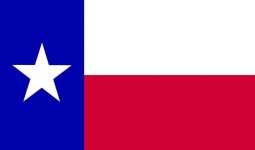When looking to purchase an apartment in Kathmandu, you’ll find a variety of options that cater to different tastes and budgets.
The cost of apartments in this bustling capital city of Nepal varies widely, influenced by factors such as location, size, and amenities.
Popular areas like Maitidevi, Gyaneshwor, and Kalanki might offer different living spaces, from cozy one-bedroom apartments to more spacious three-bedroom homes.
You might come across fully furnished apartments, offering convenience at a higher price point, or non-furnished ones that allow you the freedom to customize your living space.
Whether you seek a place with basic facilities or one that boasts luxury features, the price spectrum in Kathmandu can accommodate your needs.
Remember that prices are also affected by the local real estate market dynamics, which can vary from year to year.
You could explore listings and real estate platforms for an up-to-date market snapshot to get a clearer sense of the costs.
For instance, you can find a non-furnished 2-bedroom apartment in various areas of Kathmandu or seek out luxurious apartments that come with a higher price tag but offer additional comforts such as mountain views or a private terrace.
Remember, the ideal apartment balances affordability with your desired lifestyle and convenience in this lively city.
Overview of Kathmandu Living
Kathmandu, the capital of Nepal, offers you an intriguing blend of traditional culture and modern living.
The city stands in a valley surrounded by the Himalayas, providing a picturesque backdrop to your daily life.
When considering renting an apartment in Kathmandu, consider the city’s cost of living.
While Kathmandu is more affordable than many Western cities, prices can vary greatly depending on the location within the city.
Here’s what you need to know:
Rent: For a standard one-bedroom apartment in the city center, expect to pay between $100 to $300 per month. If you’re looking outside of the city center, this cost can drop significantly.
Utilities: On average, basic utilities for an 85 m2 apartment will cost around $35 to $50 per month.
Groceries and Dining: Eating out remains affordable, with a meal at a budget restaurant averaging around $2 to $4. Groceries will vary based on your consumption, but plan for $15 to $50 per week.
Transportation: Public transport is economical, with a regular one-way ticket costing just about $0.20.
Here are some quick facts to consider:
- Population: Around 1 million
- Climate: Mild, with temperatures ranging from 2 to 30°C throughout the year
- Culture: Rich in heritage with countless temples and historical sites
Remember that your expenses can fluctuate based on your lifestyle and the exact location in Kathmandu where you choose to live.
Average Apartment Costs
When searching for an apartment in Kathmandu, you’ll find various options that suit different budgets.
To help you narrow your search, here’s a breakdown of the average costs of renting an apartment in this vibrant city.
Rent
- Studio apartment: On average, you might pay about $160 monthly for a modest studio apartment, especially if you look more centrally.
- One-bedroom apartment: For slightly larger spaces, like a one-bedroom apartment, you can expect to pay around $200 monthly.
Utilities
Your basic utilities, typically electricity, water, and gas, might cost approximately $50 to $70 per month, although this can fluctuate based on your usage and the time of year.
Internet and TV
Staying connected is essential, and you’ll find that, on average, internet plans start around $20 per month, with variations depending on the speed and the provider.
A standard TV package might cost an additional $10 to $15 monthly.
Here’s a summarized table of the costs:
| Apartment Type | Rent per Month | Utilities (avg.) | Internet and TV |
|---|---|---|---|
| Studio | $160 | $50 – $70 | $30 – $35 |
| One-bedroom | $200 | $50 – $70 | $30 – $35 |
Remember, prices can vary based on the exact location within the city and the amenities included.
So, it’s always wise to check the latest listings and maybe consider areas just outside the city center if you want to save some money on rent.
Cost Breakdown by Apartment Type
Navigating the diverse apartment options in Kathmandu can seem daunting, but we’ve got your back with a clear breakdown by apartment type to help streamline your search.
Studio Apartments
Studio apartments offer a compact yet cozy option for living.
You’ll find that studios typically combine your living room, bedroom, and kitchen into one open space, although most include a separate bathroom.
Studio apartments are an affordable choice in Kathmandu. In the city center, they are usually available for around $160 per month.
One-Bedroom Apartments
For those who appreciate more privacy and space, one-bedroom apartments provide a separate sleeping area from the living room and often feature a balcony.
These usually come with a fully-equipped kitchen and separate bathroom.
Rent for one-bedroom apartments in Kathmandu averages $200 per month (Expat Exchange).
Multiple-Bedroom Apartments
If you’re looking to accommodate a family or roommates, multiple-bedroom apartments might suit your needs.
These apartments typically feature multiple bedrooms, a living room, one or more bathrooms, and possibly terraces for added outdoor space.
For a two-bedroom unit, you can expect the rent to be around $300 per month.
Apartments with Modern Amenities
Apartments equipped with modern amenities such as state-of-the-art kitchen appliances, advanced heating systems, or luxury finishings are expensive.
The cost can vary greatly depending on the range of amenities, such as the inclusion of a terrace or high-end bathroom fixtures.
However, they represent a splurge for those who prioritize comfort and convenience.
Neighborhoods and Location Impact on Price
When looking for an apartment in Kathmandu, prices can vary greatly depending on which neighborhood you choose.
Specific locations, such as central Kathmandu, the vibrant area of Thamel, and the historic region of Patan, each have unique influences on rental costs.
Central Kathmandu
In the heart of the city, near Kathmandu Durbar Square and other historical sites, living puts you at the center.
Prices here reflect the convenience of being close to Nagarjuna, government buildings, and various cultural attractions.
Expect rental costs to be significantly higher due to the prime location.
For example, a one-bedroom apartment might cost around $200 a month, increasing the price for more space or luxury amenities.
Thamel
Thamel is known for its bustling streets and tourist-friendly atmosphere. It’s a hotspot for nightlife, shopping, and dining.
Due to its popularity and proximity to commercial centers, rental prices in Thamel can be quite high, which may affect your monthly budget if you decide to live in this lively district.
Here, a well-placed flat might see rents that are more expensive than quieter residential areas by a considerable margin.
Patan
Patan is another enchanting area, rich with history and home to the Patan Durbar Square.
It offers a blend of traditional architecture and local culture. Apartments in Patan might be somewhat more affordable than the city center, offering a compromise between cost and cultural immersion.
Living in Patan, you can enjoy the beauty and serenity of ancient temples and the community’s close-knit feel while still maintaining access to the conveniences of a city.
Rental prices will vary based on the proximity to key landmarks and the overall demand for living in these sought-after parts of Kathmandu.
Keep in mind that apartment size, layout, and accessibility to services also play critical roles in determining your rent.
Utility Costs and Basic Necessities
Utility costs for basic amenities like electricity, water, and gas are surprisingly affordable in Kathmandu.
For an average-sized apartment, you may spend a little over $30 monthly for these utilities combined, with electricity, heating, cooling, and water included.
Your internet connection, an indispensable service, is generally reliable and reasonably priced.
You can anticipate an internet package to cost you around 15 to 20 USD per month.
Grocery shopping for food essentials such as rice, milk, eggs, local cheese, tomatoes, and potatoes will vary in cost depending on the market and quality.
Still, on average, prices in Kathmandu are much lower than you might find in Western cities.
As an example, here’s what you might typically pay for these staples:
| Item | Average Cost (in USD) |
|---|---|
| Rice (1kg) | 0.70 |
| Milk (1 liter) | 0.60 |
| Eggs (dozen) | 1.40 |
| Local Cheese (1kg) | 10.00 |
| Tomatoes (1kg) | 0.90 |
| Potatoes (1kg) | 0.70 |
If you enjoy relaxing with a beer after a long day, local varieties can cost less, typically around 2 USD for a bottle, while a pack of cigarettes hovers around the same price.
Remember, these prices are just a guideline; they fluctuate based on location, season, and other factors.
However, they should give you a solid starting point to budget your monthly essentials.
Additional Living Expenses
When you move to Kathmandu, you’ll need to cover more than just the rent—you should also budget for groceries, meals out, getting around, and clothing essentials.
Here’s a breakdown of what you can expect to pay for these necessities.
Grocery and Market Costs
In Kathmandu, a trip to the grocery store can vary greatly in cost, but here’s what you might spend on some basic items:
- Bread (500g loaf): $0.30 – $1
- Rice (1kg): $0.60 – $2
- Chicken Fillets (1kg): $4 – $6
- Beef Round (1kg): $5 – $7
- Milk (1 liter): $0.70 – $1.50
- Eggs (dozen): $1.10 – $2
- Vegetables (lettuce, onions, bananas, oranges): Prices fluctuate seasonally.
Fresh produce from local markets is usually less expensive than imported goods.
For instance, a kilo of bananas can cost around $0.75, whereas imported oranges may cost up to $2 per kilo.
Dining and Eating Out
Eating out in Kathmandu ranges from budget-friendly street food to more upscale restaurant dining.
Here’s what you can expect:
- Inexpensive restaurant meal: Around $2 – $3
- Mid-range restaurant (3-course meal for two): Approximately $15 – $20
- Combo meal at McDonald’s (or equivalent): Around $5 – $6
- Imported Beer (0.33-liter bottle): About $3 – $4
- A regular Coke or Pepsi (0.33-liter bottle) costs around $0.50.
Transportation
Getting around Kathmandu can be done in various ways, and here’s what you could be paying:
- Local Transport (one-way ticket): $0.20 – $0.30
- Monthly Pass (regular price): $15 – $20
- Taxi Start (normal tariff): About $2, plus around $0.50 per kilometer afterward.
For those who prefer personal transportation, the cost of 1 liter of gasoline is approximately $1.00.
Clothing and Lifestyle
When updating your wardrobe or indulging in some retail therapy, keep these average prices in mind:
- 1 Pair of Jeans (Levis 501 or similar): $40 – $60
- Summer Dress in a Chain Store (Zara, H&M…): $30 – $50
- 1 Pair of Nike Running Shoes: $60 – $100
- 1 Pair of Men Leather Business Shoes: $50 – $80
Remember, shopping at local markets and bargaining can often lead to better deals than in shopping malls or branded outlets.
Leisure and Recreation Costs
When you live in Kathmandu, you’ll find many options to unwind and stay active, all with varying costs that fit different budgets.
Entertainment and Activities
Kathmandu offers a diverse range of entertainment options. Depending on the theater and time, a night out at the cinema could cost you around NPR 300-700.
For those who love scenic experiences, mountain views can be enjoyed from various points around the city; some are free, while others might charge a nominal fee.
If you prefer staying home, investing in a flat-screen TV, which provides a hub for home entertainment, could set you back approximately NPR 25,000 to 100,000.
Fitness and Sports
Staying fit in Kathmandu can be both affordable and enjoyable.
A fitness club membership costs around NPR 2,500 to 7,000 per month, depending on the location and facilities offered.
Renting a tennis court could cost around NPR 500 to 1,500 per hour if you prefer playing sports.
A Volkswagen Golf or similar car can also be a fun option for getting outside and traveling around the city.
Still, it is considerably pricier in terms of cost, depending on the current vehicle market rates.
Alternatively, public transport is much cheaper, typically under NPR 50 for a one-way ticket within city limits.
Transportation Expenditure
Exploring the range of transportation costs in Kathmandu helps you budget effectively for your daily commute, whether by public transport, taxi, or personal vehicle.
Public Transport
In Kathmandu, public transport is a wallet-friendly option for getting around.
You can purchase a one-way ticket for local transport at a low cost.
Monthly passes are available for regular commuters. They provide unlimited travel and are a more cost-effective solution than single tickets.
Taxi Services
Catching a taxi can be more expensive than public transport, but it offers convenience and personal space.
Taxi fares generally start with a base charge, called the taxi start cost, and additional charges accrue based on the distance traveled.
Private Vehicle Costs
If you own a vehicle, such as a Volkswagen Golf 1.4 90 kW Trendline, you must consider recurring expenses like gasoline.
Fuel prices fluctuate, influencing your monthly expenditure if you primarily rely on a private transport vehicle.
Connectivity Costs
When settling into a new apartment in Kathmandu, you’ll want to consider the cost of staying connected.
Internet service is vital for both work and leisure; fortunately, you have various options.
Internet
Depending on the speed and provider, you can expect to pay around $15 to $50 per month for decent broadband internet.
Mobile Phone Monthly Plans
Mobile phone plans are often more affordable. You can find monthly plans that include calls, texts, and a healthy amount of data for around $5 to $15.
| Service Type | Cost Range |
|---|---|
| Internet | $15 – $50 |
| Mobile Plan | $5 – $15 |
Data Packs
Data packs are widely available for on-the-go internet. Prices vary widely, but you can typically get a data pack with a few gigabytes for just a couple of dollars.
Calls
Making calls won’t break the bank. Local call rates are reasonably priced, and if you frequently make international calls, consider getting a dedicated plan or using internet-based services like Viber or WhatsApp, which can be more cost-effective.
Remember, prices can fluctuate, so it’s a good idea to shop around and find the best deal that fits your needs.
Friendly tip: always check data speeds and coverage, especially if your work depends on a reliable internet connection.
Education and Childcare Expenses
When considering the cost of living in Kathmandu, factoring in expenses for your children’s education and childcare is crucial.
These costs can vary widely depending on the type of schooling and childcare services you opt for.
Primary Schooling
In Kathmandu, the fees for international primary schools can be significant.
Tuition fees for these schools average around NRs 24 lakhs, highlighting the premium nature of the education they offer.
These institutions often provide a global curriculum and a wide range of extracurricular activities, which justifies their higher price than local schools.
Childcare Services
Childcare services, however, can range in cost based on the facility’s quality and the duration of care your child needs.
For a trustworthy and reputable childcare provider, you could expect to budget a portion of your monthly expenses for this service.
The exact cost will depend on whether you require full-time or part-time care, but ensuring your child is in a safe and nurturing environment will be worth the investment.
Summary and Final Thoughts
Renting an apartment in Kathmandu offers you affordability compared to many cities worldwide.
For a one-bedroom apartment, your monthly cost could be around $200, while a two-bedroom can be roughly $300 per month.
These prices fluctuate based on location and available amenities.
If you’re considering purchasing property, expect to pay around $50,000 for a one-bedroom and close to $70,000 for a two-bedroom.
Depending on your lifestyle, living costs in Kathmandu can range from $455 to $1000 monthly, including rent, food, transport, and more.
Here’s a quick breakdown of monthly costs for living in Kathmandu:
- Rent:
- One-bedroom: approximately $200
- Two-bedroom: approximately $300
- Living Expenses (including utilities, food, and transport): $455 – $1000
Remember, these figures are indicative and can vary. Always check current listings and speak with locals for the most accurate picture.
Your adventure in Kathmandu awaits with the promise of an economical and fulfilling lifestyle!








